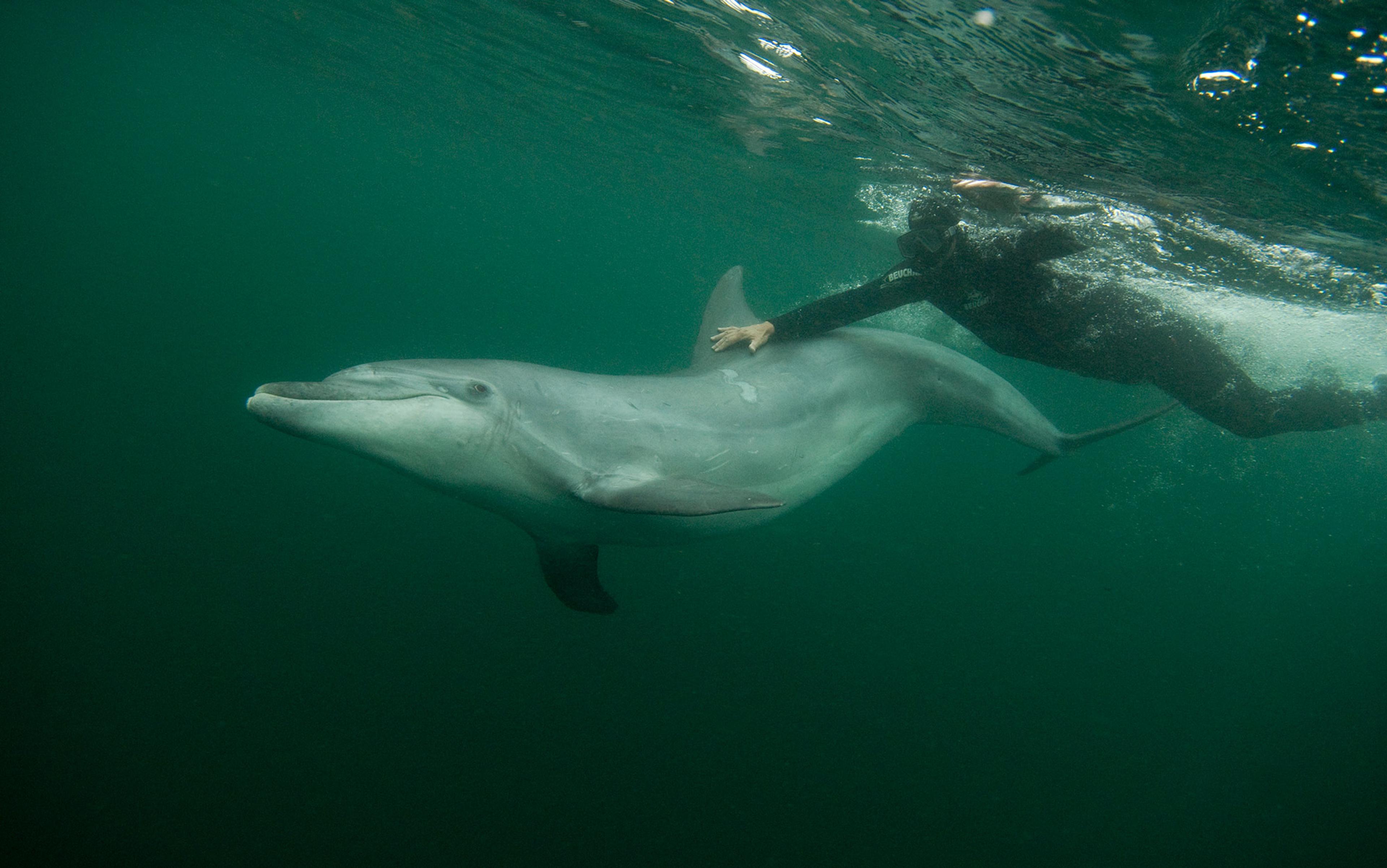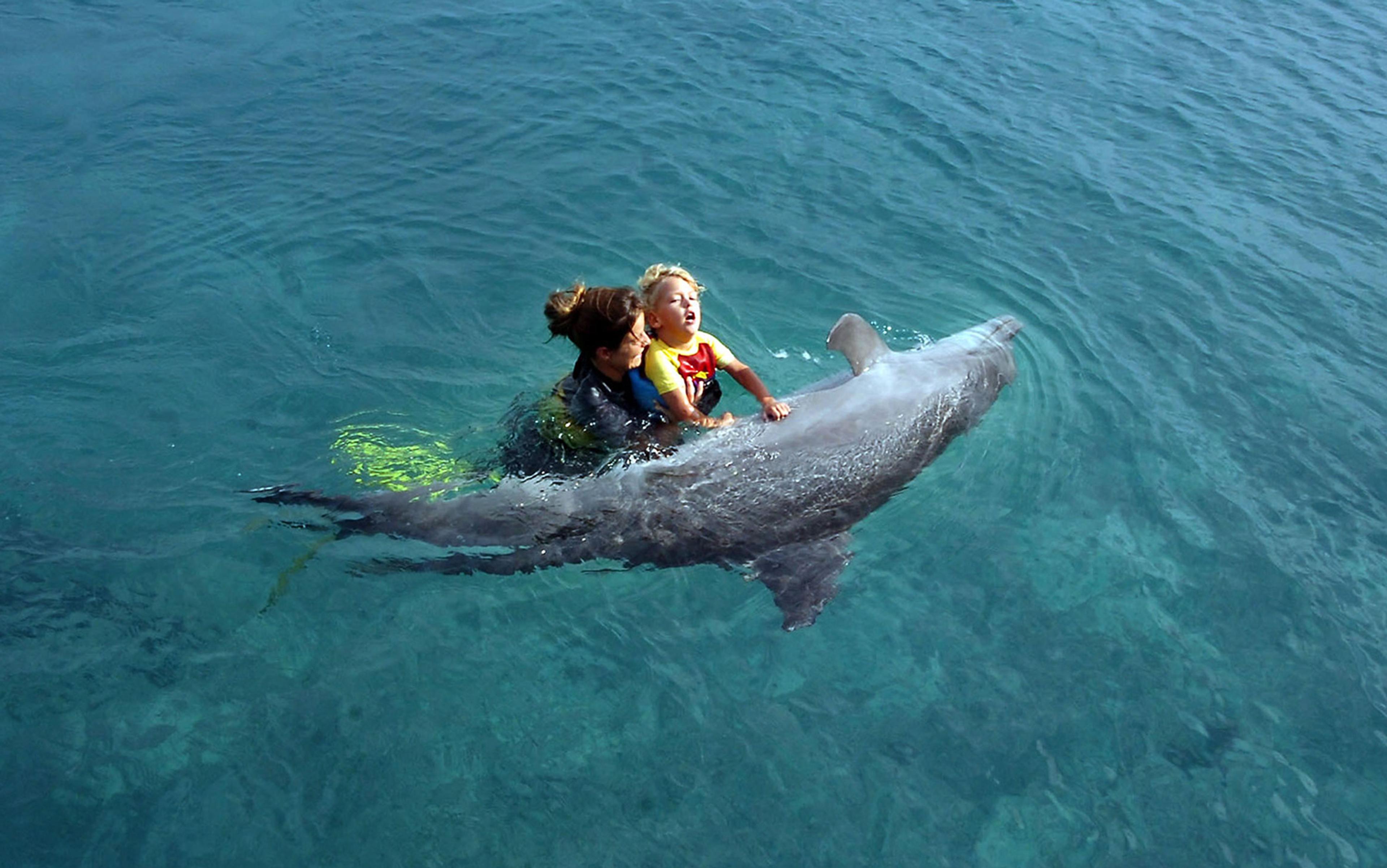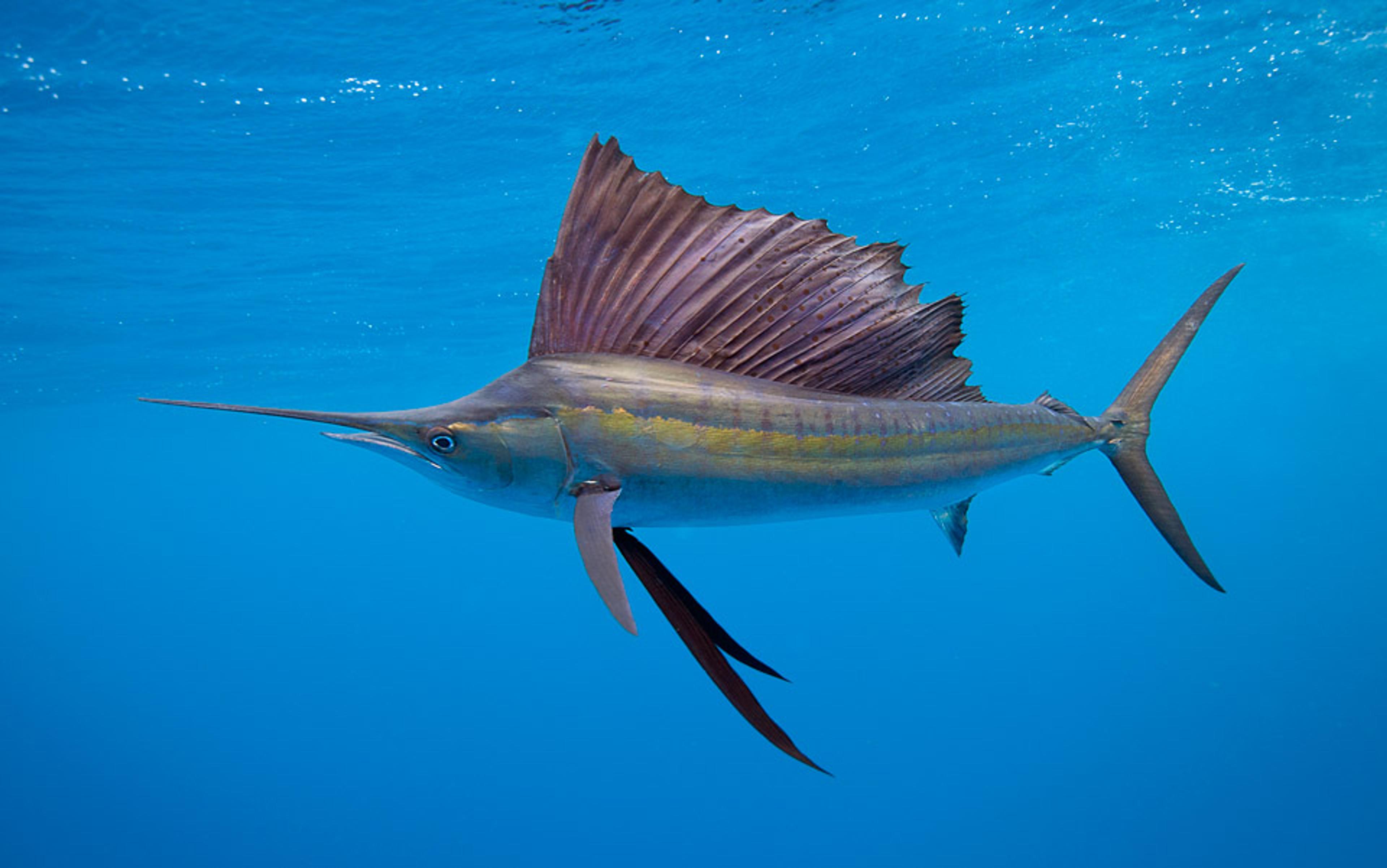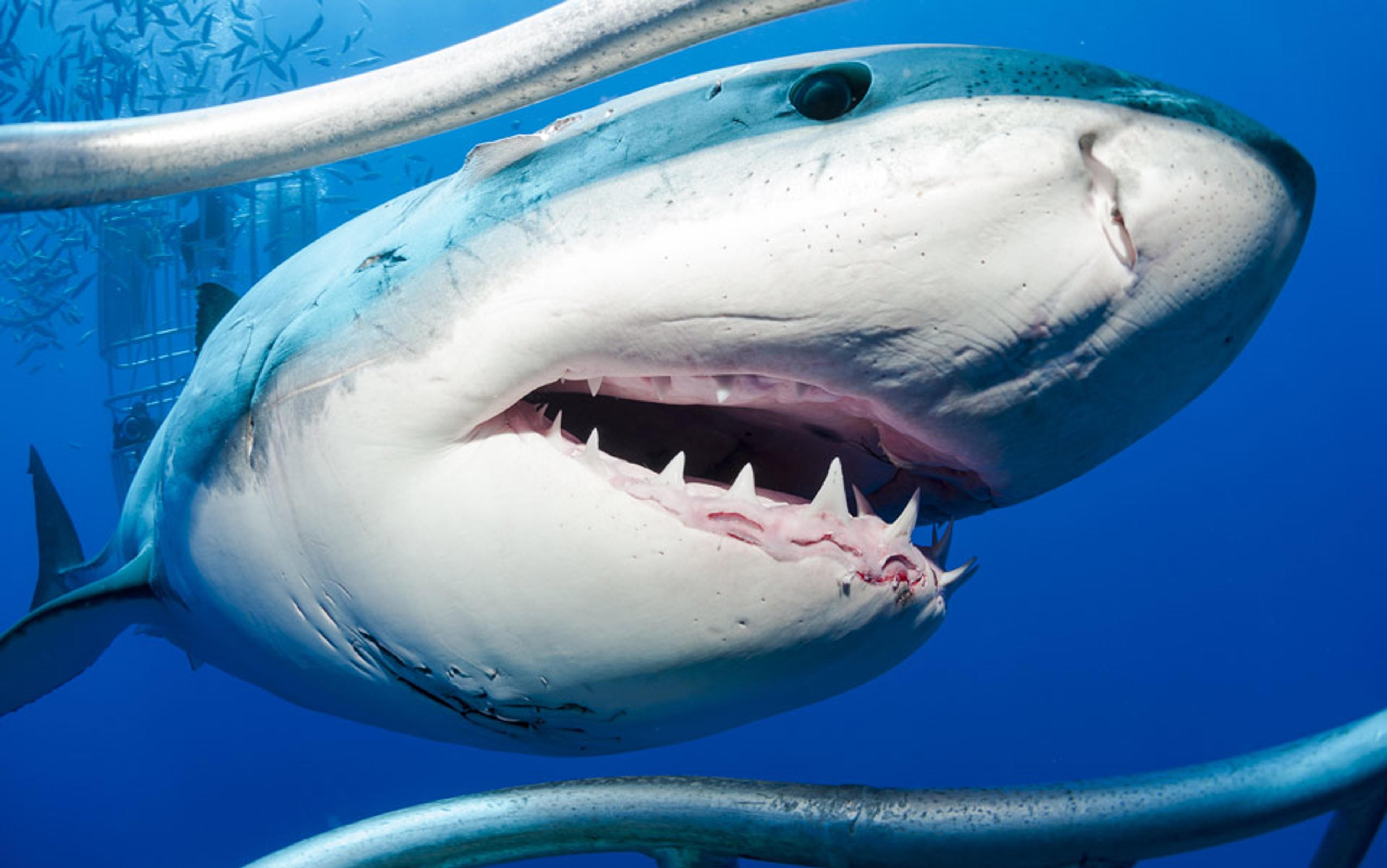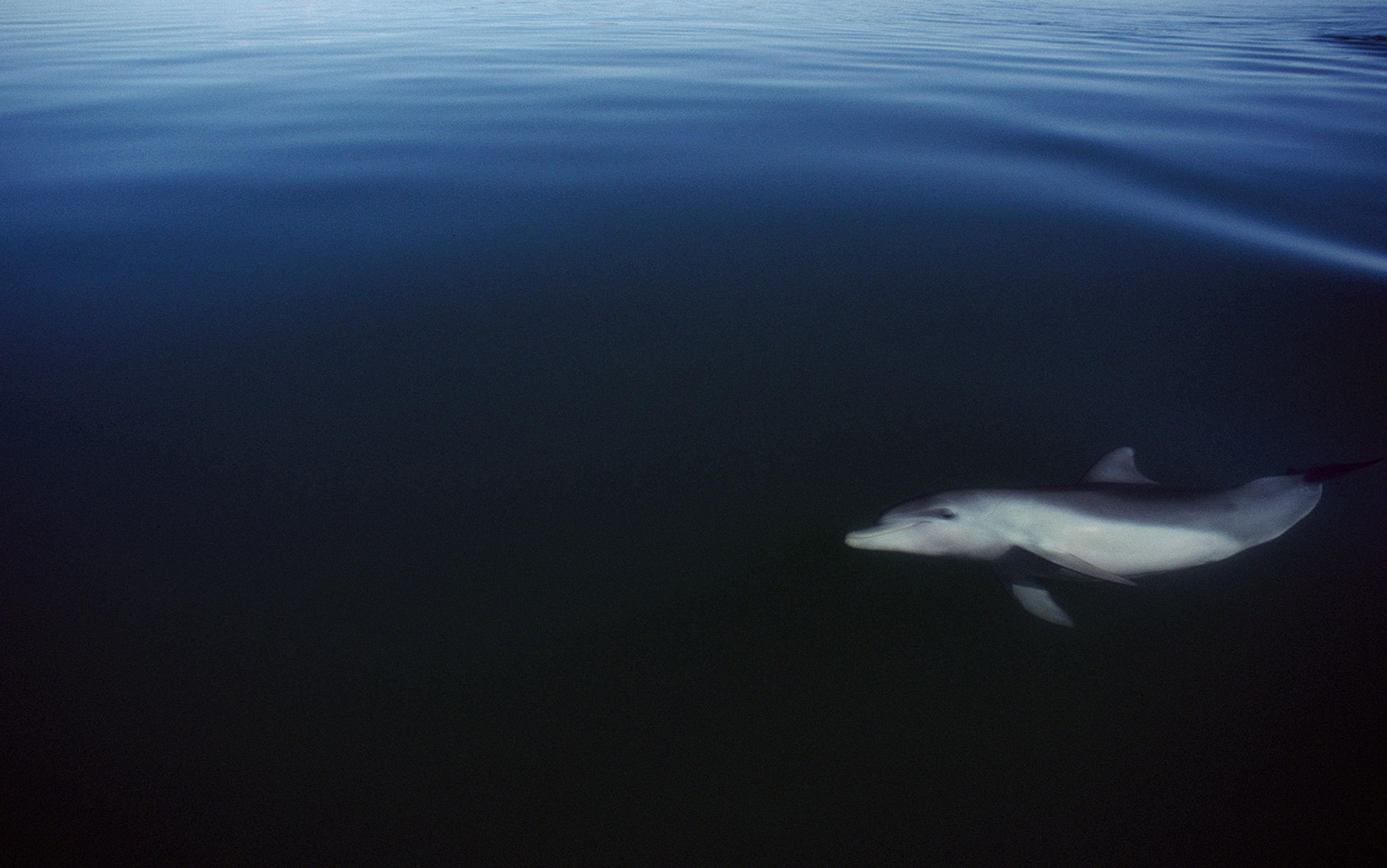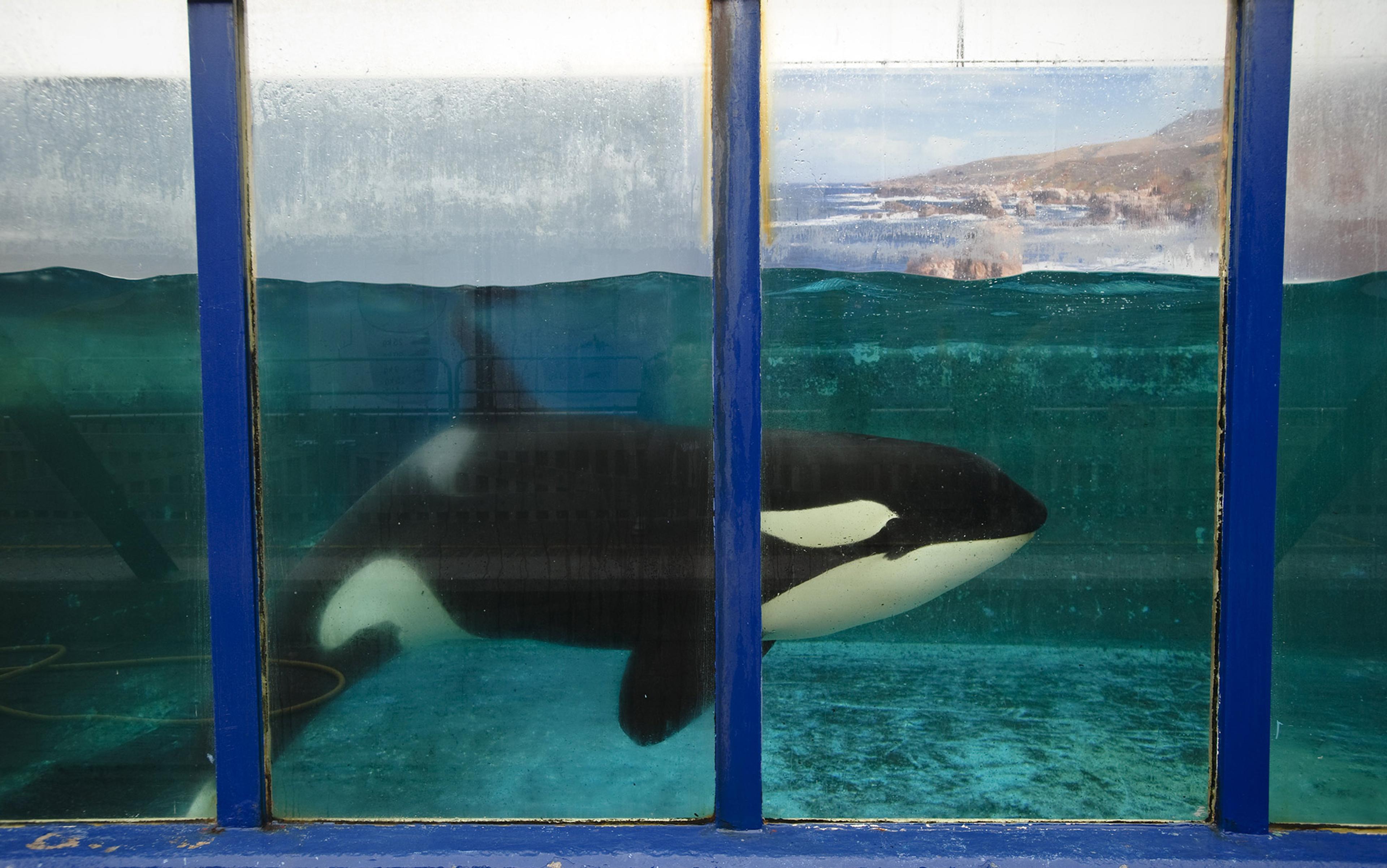One evening in the summer of 2004, I was in a bar on the Bahamian island of Bimini when a smiling young woman came up to me. I was on the island as part of my training with the Dolphin Communication Project, a small US research organisation that studies a resident population of Atlantic spotted dolphins just offshore. The smiling woman was a massage therapist, and she wanted my opinion. She had a plan to set up a dolphin resort at an undisclosed location in the Bahamas. The idea was to capture dolphins from the wild and transfer them to swimming pools where they would be used in healing therapy. What did I think? Well, I was not too keen on the idea. Why jeopardise the welfare of wild animals by removing them from their home? Why not just take people out to swim with the wild dolphins, as they already did in Bimini, and let them interact with people on their own terms? But the massage therapist didn’t see it like that. ‘You don’t understand,’ she said. ‘Dolphins want to help people — they will want to be with us at the resort. Humans and dolphins share a special bond, don’t you know?’
At the time, I had never heard of a dolphin-human bond. As a fledgling dolphin cognition researcher, I simply didn’t know enough about dolphin behaviour to say whether she was talking science or science-fiction. Now it is almost 10 years since that encounter with the massage therapist on Bimini, and I am finally familiar enough with the scientific literature to pick up this discussion where it left off. What is the nature of the dolphin-human relationship? Do dolphins have an unusual desire to seek out human contact? Is it unusually friendly?
The science makes one fact undeniably clear: wild dolphins of some species are noted for seeking out social encounters with humans. The phenomenon of lone sociable dolphins — for whom human contact appears to substitute for the company of their own kind — is documented extensively in the scientific literature. Among the better-known examples are Pita from Belize, Davina from England, Filippo from Italy, Tião from Brazil, and JoJo from Turks and Caicos. One report from 2003 described 29 lone sociable dolphins that were regularly observed by scientists, and a number of scientific articles have been published since then on new ones. There is no doubt that these animals are exhibiting inquisitive behaviour, which lends weight to the idea that dolphins do in fact seek out human contact with some regularity. One might go so far as to say it constitutes irrefutable evidence: apparently wild dolphins can have an affinity for humans. But should this kind of social contact also be considered friendly? There, the record is more ambiguous.
Of the 29 well-studied dolphins just mentioned, 13 of them exhibited ‘misdirected sexual behaviour towards humans, buoys, and/or vessels’, which means the dolphins (mostly males) occasionally sported an erection and attempted to mount swimmers. It’s not always possible to interpret what ‘sexual’ behaviour might mean in this context, but by all accounts it was dangerous for the humans. Women often seem to be the victims of these aggressive encounters. Some jealous dolphins reportedly chased male humans out of the water so that they could keep their human female prizes all to themselves. A number of these dolphins made a habit of abducting people — dragging them out to sea, preventing them from returning to shore, even pinning them to the seabed. Two-thirds of the 29 dolphins directed overtly aggressive behaviour at humans, resulting in ruptured spleens, broken ribs, people being knocked unconscious, and worse. In 1994, the Brazilian dolphin Tião managed to send 28 people to hospital during his visits before eventually killing the swimmer João Paulo Moreira (who was reportedly drunk and possibly trying to restrain Tião, or maybe even attempting to force a cigarette into his blowhole).
This, I should emphasise, is the only case of a human fatality involving a wild dolphin that I could find in the scientific literature. Even so, it is clear that aggression is common even among the friendliest of friendly dolphins. Because of the damage they have caused to property and swimmers, many lone sociable dolphins are considered nuisances. Were they provoked? More than likely. More than half of these dolphins ended up with injuries caused by their association with humans, and many of them were killed — some of them on purpose. But provocation and justified self-defence do not negate the fact that these friendly dolphins can be extremely dangerous.
Perhaps we could look instead to another category of wild dolphin that has been known to spend time in proximity with humans. Provisioned dolphins are essentially bribed with fish to interact with humans. Unlike the lone sociable dolphins, they only seem interested in us because they receive free food. Visitors regularly report curious and amiable interactions with them. Aggression, however, remains a problem. Tourists and locals in Florida, Louisiana and other parts of the US coast regularly (and illegally) offer food to wild dolphins, with the predictable result that the humans are commonly bitten, while dolphins have suffered propeller strikes and other injuries (including one animal that was killed in 2012 when someone in Alabama or Florida stabbed it in the head with a screwdriver).
Because they are so dangerous for both parties, the National Marine Fisheries Service and its partners have initiated an awareness campaign to discourage such encounters. The US Marine Mammal Protection Act of 1972 prohibits feeding or otherwise interacting with wild dolphins and other marine mammals. Monkey Mia, a tourist destination in Western Australia that is famous for its provisioned dolphins, has introduced policies to discourage people from feeding adult males, and the daily feeding encounters are tightly regulated by local officials in order to minimise risks. Clearly, dolphin curiosity does not result in benevolent encounters. But then, if their primary motive is hunger, why should it?
In a number of places around the globe it is possible to watch or swim with groups of wild dolphins that have become accustomed to human swimmers, no bribery required. They can be found (among other places) in the Bahamas, Japan, Egypt, New Zealand, the Azores, and Hawai’i (where it’s technically illegal to swim with wild dolphins). In some places, such as the Little Bahama Bank in the Bahamas, it might even have been the dolphins who first initiated regular contact with human boaters or swimmers. In other areas, for example the Florida Keys, the local dolphins were systematically targeted in order to habituate them to human presence.
Whether this was serious aggression, mild annoyance, or just a form of play behaviour is up for debate
In the Bahamas, where in-water encounters are common, evidence of friendly inter-species interaction is abundant. The wild spotted (and sometimes bottlenose) dolphins found in these regions undeniably behave in an extremely curious and friendly manner toward researchers and tourists, with inter-species games such as seaweed keep away lasting for hours. These kinds of encounters — documented extensively in the scientific literature — constitute clear evidence of an affinity for human contact. Entire tourist industries are based around friendly interactions with these curious wild dolphins. But even under these circumstances, aggressive behaviour has been known to occur.
One of the most highly publicised incidents was the case of Lisa Costello, whose 1992 run-in with a wild pilot whale (technically a dolphin species) was captured on film and can easily be found online. In the video, you can see Lisa swimming with a large wild pilot whale near Kealakekua Bay in Hawai’i. She gently caresses the animal while it is resting at the surface. The next moment, the pilot whale clamps down on her leg and drags her under water. Over the following minutes, the animal repeatedly grabs her and lets her go, at one point diving down 30 or 40ft with her grasped firmly in his jaws. Lisa barely survived the encounter. Whether this was serious aggression, mild annoyance, or just a form of play behaviour on the part of the pilot whale is up for debate. There are no other reports of pilot whales attacking swimmers in areas where in-water interaction is known to occur. In fact, when you set aside lone sociable dolphins, attacks such as these on human swimmers are extremely rare.
At first look, then, the case for a special dolphin-human bond based on mutual affection appears equivocal. But perhaps I’m not considering the most decisive evidence. What about the long tradition of wild dolphins helping to save human swimmers from drowning — an act that, on the face of it, seems as friendly as it gets? Alas, accounts of such episodes are almost entirely anecdotal in nature, usually appearing in the form of human-interest news articles. Typically, they involve dolphins forming a protective circle around swimmers to defend them from sharks, pushing a floundering swimmer up to the surface of the water to breathe and/or be fished out of the water, or leading the victim to safety, sometimes by actively dragging or towing them to shore. Since it is well‑known that dolphins provide this kind of altruistic support to each other (also known as epimeletic behaviour), the idea that dolphins can and do rescue humans in these ways is entirely possible, if not likely. But there is not enough evidence to evaluate the true nature of these encounters.
The trouble is, human memory is treacherous, and traumatic events in particular make for unreliable eyewitnesses. Scientists studying dolphin (or other animal) behaviour are well aware that different observers produce different reports, which is why controls are put in place to compare observer notes and to use objective measures such as video recordings. Alas, there are no dolphin-rescues captured on film, and none reported in the scientific literature so far as I know, so all such stories appear to be based exclusively on eyewitness descriptions. Consider that in many of these cases, the victims had been or were about to be attacked by sharks or were otherwise on the verge of a near-death experience, and that these rescues usually involved people with limited knowledge of dolphin behaviour. It seems doubtful that, just moments from death, they should be able to coolly observe the behaviour of the dolphins and produce a reliable narrative of events. Therefore, until solid evidence turns up, we should take these stories with a grain of salt, however plausible they might seem, and however frequently they are reported.
You never hear from the people that the dolphins didn’t save
We should also weigh them against the body of anecdotal evidence that paints a less rosy picture of dolphin conduct. The pilot whale that almost drowned Lisa Costello is not going to win any medals for acts of heroism. The marine mammal researcher Toni Frohoff, director of TerraMar Research in California, reported an incident in which dolphins suddenly fled the scene as soon as a shark was spotted, leaving her to fend for herself. There’s even a news report from 2007 of an intoxicated man who was attacked by a group of bottlenose dolphins after falling into the Black Sea in Ukraine. The animals allegedly tried to drown him, prompting the Russian news agency Interfax to declare that they ‘lack the reputation of friendliness and love of humans enjoyed by dolphins in wealthy nations’.
Perhaps the homicidal-dolphin phenomenon is more prevalent than we know. As Kathleen Dudzinski, my research supervisor at the Dolphin Communication Project, used to say: ‘You never hear from the people that the dolphins didn’t save.’ It might well be that some dolphins are pathologically indifferent to our fate, leaving us to drown when they could have easily saved our lives. Although the idea of killer-dolphins sounds ridiculous, the world has seen stranger things. One news item from 2012 tells the tale of a fisherman lost at sea in the Pacific who was led to safety not by a dolphin, but by a shark. He was lucky that friendly dolphins did not show up to drive the friendly shark away, or he might never have been heard from again.
Many dolphins definitely don’t have a special bond with us. The only contact that common dolphins, striped dolphins, Fraser’s dolphins, Commerson’s dolphins, Clymene dolphins — indeed, the majority of the 40 or so species of dolphin — generally have with humans is when they ride the bow waves of our ships or get caught in our fishing nets. Records of friendly encounters almost invariably involve species, such as bottlenose dolphins and spotted dolphins, that live near shallow water, which is to say, near us. It would therefore be false to say that dolphins as a taxonomic family (family Delphinidae) have an affinity for humans. Most of them rarely interact with us.
If, on the other hand, we accept that we’re only talking about a handful of species, we are still left with the problem of how to measure friendliness. In particular, how do we know that dolphins are friendlier than is normal for an animal species? Clearly, we need a way to compare friendliness to some sort of baseline. The nearest thing we have (still not very near, unfortunately) is the emerging field of animal personality studies.
Researchers such as Samuel Gosling, professor of psychology at the University of Texas, and his colleagues at the Gosling Lab have been developing a means of objectively testing animals in order to evaluate the nature of their individual personalities. Pet owners tend to find it obvious that individual animals have different personalities and temperaments, but the challenge for scientists is how to measure this objectively. Not only does the assessment need to be similar, regardless of which person is rating the personality, but it needs to reliably predict how that individual animal will behave in the future. Studies have been published evaluating the personalities of octopuses, squid, pigs, dogs, hyenas, monkeys, gorillas, chimpanzees, and yes, dolphins. For the dolphin study, the individual animals were evaluated using a scale to measure five standard factors: (1) openness to experience; (2) conscientiousness; (3) extroversion; (4) agreeableness; and (5) neuroticism. The conclusion was that individual dolphins have stable personalities that independent observers generally agreed upon. Some dolphins were more agreeable than others, some more neurotic — and these personality traits were the same from year to year.
These personality tests work well enough when looking at individuals within a species, but not so much when comparing different species. What would it mean to say something such as ‘Gorillas are friendlier than hyenas’? Imagine that you have two gorillas: one that often grooms its family members, and one that never grooms its family members. The first gorilla would be rated as more agreeable than the second. If you were observing hyenas, you would likely rate the hyena that was involved in an average of only 3.5 aggressive encounters per day more agreeable than the one that was involved in an average of 18 aggressive encounters per day. But is the agreeable hyena more agreeable than the agreeable gorilla? We’re comparing apples and oranges, and truly meaningful cross-species comparison will elude us until we can be sure all the behaviours we’re looking at are, so to speak, the same kind of fruit. Perhaps this will become possible some day (it is in fact one of the goals of the field of personality studies). Then we could see how dolphins measure up. But we aren’t there yet.
Since there is no scientific way of telling whether dolphins are friendlier to humans than other animals, I’m forced to turn to anecdotal accounts and personal opinion. My gut tells me that domestic animals such as cats and dogs are clearly friendlier than dolphins. It seems inconceivable that any animal could possibly be more excited to see a human being than the Dalmatian I had as a child, who nearly passed out from waggly-tailed happiness whenever she spotted me returning home from school. Perhaps this friendly excitement is a result of the domestication process — a few millennia’s worth of humans breeding dogs specifically to love us. But even wild animals such as elephants, gorillas, chimpanzees, bears, wolves, lions and parrots can thrive in constant close contact with human beings when tamed, and some species reportedly seek out human contact in a purely wild setting — just like dolphins. Do these wild species have more of an affinity for humans than wild dolphins? This is, I am afraid, in the eye of the beholder.
All the same, regardless of how unusual it might be when compared with other animal species, there is a stack of good scientific evidence that documents curious and friendly dolphin behaviour involving human beings, which is probably enough to support the idea that dolphins have an affinity for humans. But the fact that dolphins sometimes (and, in the case of lone sociable dolphins, quite frequently) attempt to injure human beings should be enough evidence to dismiss the idea that these encounters are always friendly in nature. And there is currently no strong scientific evidence to suggest that dolphins are always keen to lend a helping hand when humans are drowning or being attacked by sharks.
If you find yourself in any of these situations, don’t count on the verifiable but otherwise unpredictable dolphin-human bond to save you. Dolphins are, after all, wild animals. Overestimating their interest in human companionship — whether it’s in shark-infested waters or at a healing resort — is likely to do more harm than good.
